Understanding RAID: The Uses, Pros and Cons of Each Level

One of the primary considerations when setting up a server is the storage capacity, and for operations that need greater protection or performance, RAID is often seen as the best answer. While simpler operations often do well with single disks, as storage needs grow you may want to consider how RAID configurations could benefit you.
RAID, an acronym for Redundant Array of Independent Disks, is a method that stores information on multiple hard disks. There are several different levels of RAID, and each has its own place and purpose. Understanding what each one does, the limitations each configuration has and where it can best be used is crucial in making sure you adopt the storage method that’s right for you.
What is RAID, and Why Does It Matter?
RAID improves overall performance of input/output (I/O) operations by using multiple disks, which increases the mean time between failure. The redundant storage of data also improves the operating system’s fault tolerance.
RAID uses either disk mirroring or disk striping to protect data. In striping, known as RAID 0, the data is divided into blocks and is spread across multiple storage devices. Mirroring, which is also referred to as RAID 1, replicates or “mirrors” data to two or more disks.
A third configuration, double-parity RAID, also known as RAID 6, stripes the data across a minimum of four drives and also writes a second set of parity data across all the drives.
When drives are combined in different configurations, they can provide users with greater performance and redundancy than if they were operating individually.
All of these methods have pros and cons; in mirroring, even if one disk fails, the data will be intact because it is on another disk. However, because both disks are running and storing the data, the disks’ storage capacity is cut in half.
Striping is fast and writes data at a high speed, but it doesn't have redundancy. That means if a drive fails, all of the data is lost—which is why it’s best to use it for storing data that isn’t critical or sensitive and can be replace if the drive fails.
Double-parity RAID has many advantages, but it requires a complex controller, as well as two extra drives, which makes it more expensive. It also writes transactions slower.
In addition to the previously mentioned RAID levels, RAID 5 and RAID 10 are options that can be considered. RAID 5 is the most common secure RAID level and requires a minimum of three drives—although it can handle up to 16 drives. It uses disk striping with parity, which occurs evenly across the disks and prevents any disk from becoming a bottleneck. In case of a disk failure, the striping allows users to reconstruct data.
The popularity of RAID 5 is due in part to its high performance, which is comparable to RAID 0, and its large amount of usable storage, which is greater than both RAID 1 and RAID 10.
RAID 10 is a combination of RAID 0 and RAID 1; the data is mirrored and then the mirrors are striped. While it costs much more than RAID 1, it also offers a higher level of performance and operates at a high speed. This hybrid configuration allows for the most rapid rebuild times in the event of failure.
Weighing the Advantages and Disadvantages
When it comes to deciding which RAID configuration is ideal for their operation, users have to consider what each level of RAID offers and where each is most beneficial. Here’s a quick look at the different levels of RAID, the advantages and disadvantages of each one and what environment they are best suited for:
|
Level
|
Advantages
|
Disadvantages
|
Best Usage
|
RAID 0
(Striping)
|
Easy to implement,
great read/write performance,
uses all storage capacity
|
If one drive fails, all data
in the array is lost.
|
Non-critical data storage
that must be read/written
at high speed
|
RAID 1
(Mirroring)
|
Excellent read/write speed,
simple technology
|
Has only half the storage
capacity of the total drive
|
Small servers that use
two data drives or
mission-critical
storage
|
RAID 5
(Striping with parity)
|
Fast read speed, access
to data even if the drive fails
|
Rebuild time can take
longer
|
File and application
servers with limited
number of data drives
|
RAID 6
(Striping with double parity)
|
Similar to RAID 5,
but more secure
|
Data transactions slower
than RAID 5, rebuild can
take a long time
|
Application servers with
multiple large drives for
data storage
|
RAID 10
(RAID 1 + RAID 0)
|
Rapid rebuild times
|
More expensive
|
I/O-intensive operations
that require little to no
downtime
|
Here are graphical representations of each level:
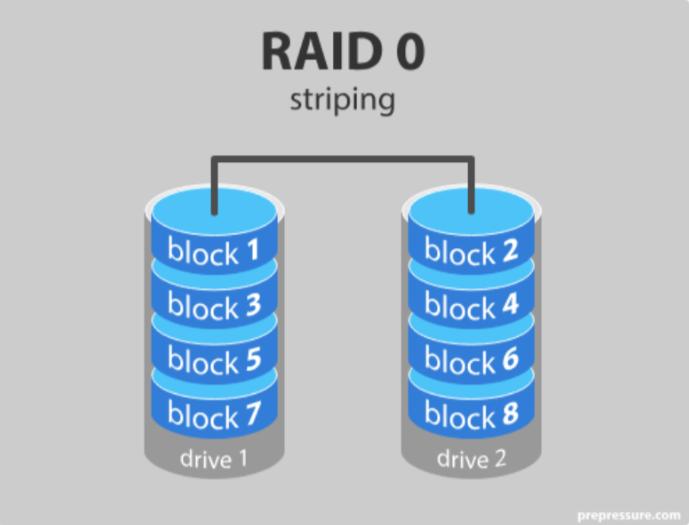
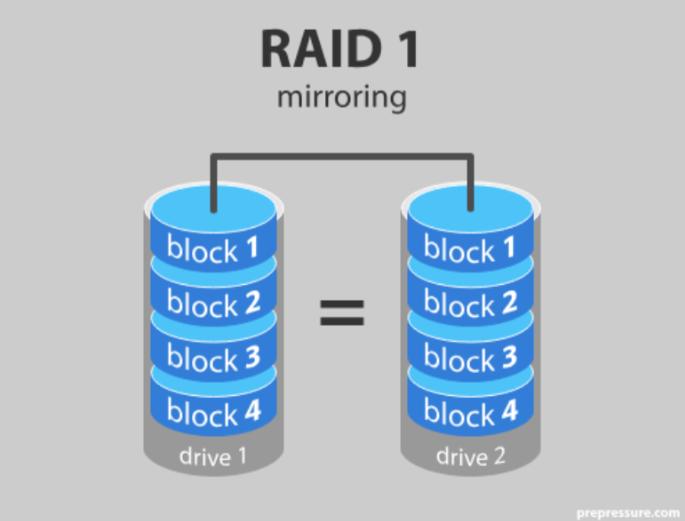
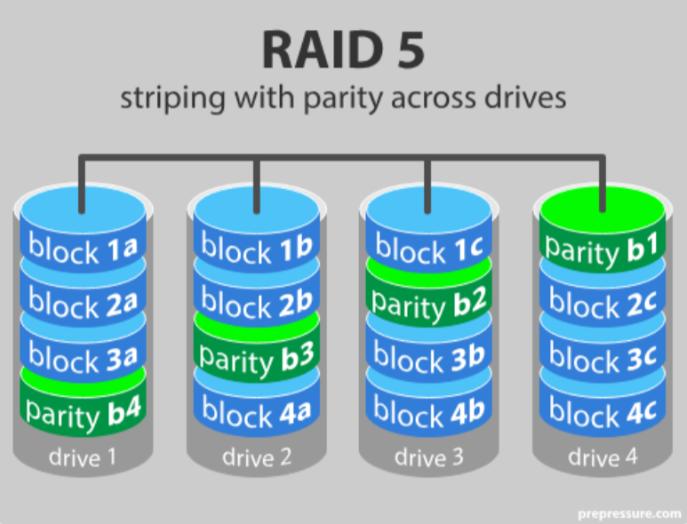
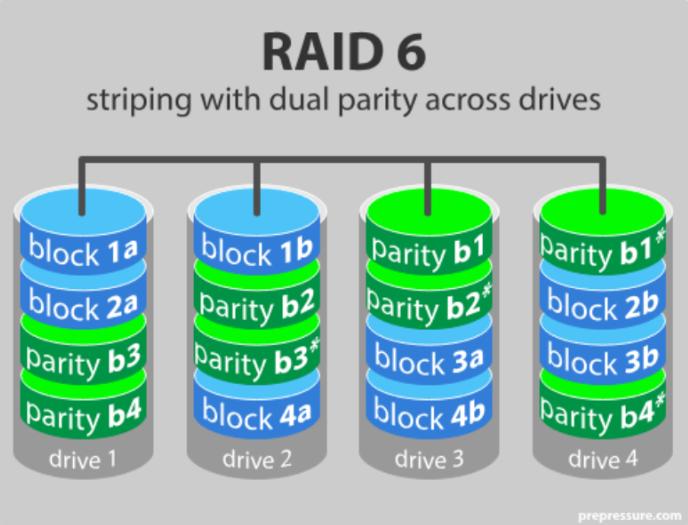
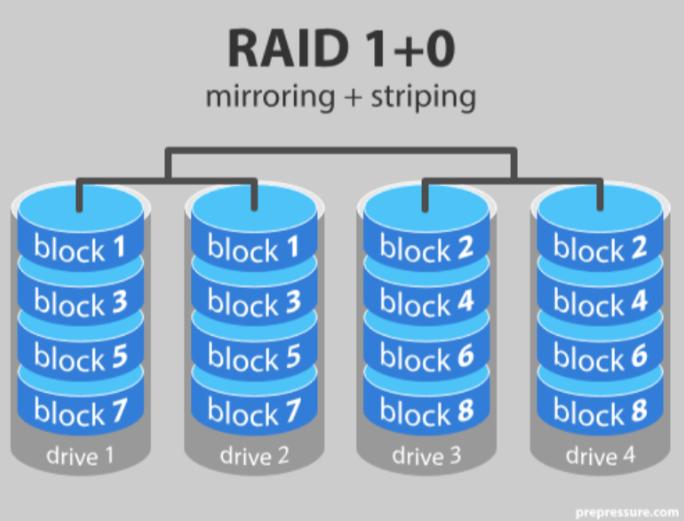
Despite the fact that RAID is an older technology, it remains a reliable form of storage even as new options emerge. Its multiple configurations provide an array of choices that make it appealing to a wide range of users, from small business users to large enterprise workloads. RAID can also be used as a complement to other forms of storage technology, such as
solid state drives (SSDs), providing reliable data redundancy.
When it comes to data storage, complex redundancy and performance requirements call for solutions that are designed for the specific needs of that server environment. To help find the solution that is right for your business, contact Aventis Systems and let us discuss which options might best be suited for your server environment. Contact us at 1-855-AVENTIS or find us online at
www.aventissystems.com.
|